Open: July 1-31, Aug 1-31, 11am-6pm
Fee: adult €7, OAP/student €6.50, child €6, family €20

donation
Help me to pay the entrance fee to one of the houses on this website. This site is created purely out of love for the subject and I receive no payment so any donation is appreciated!
€10.00

Some section 482 properties are “garden only.” I have marked these in the listings on my home page. In the listings it is not always obvious whether the house or just the gardens are open according to the Section 482 rules, so I contacted the Business Taxes Policy & Legislation Division of Revenue, who clarified for me which properties are garden only. Kilfane is one of the properties which is genuinely “garden only.”
The yellow house next to the gardens looks gorgeous but it is a private residence. It is not the main house at Kilfane. The main house was built in 1798 for the Power family (it may have been added on to a previously existing house, owned by the Bushe family, who owned the land before the Powers married into it [1]) and has a three storey five bay centre block with three bay wings, which are single-storey at the front and two storey at the back. This house is located a distance from Kilfane Glen and Waterfall, and we did not see it. For more on the life in that big house, see the chapter on Kilfane in Mark Bence Jones, Life in an Irish Country House. Constable, London (1996), and for more on the old main house at Kilfane, see Robert O’Byrne’s entry about it on his Irish Aesthete website. [2]

The house which we saw at Kilfane was originally a worker’s cottage or woodsman’s house. built around 1850, probably incorporating fabric of earlier ranges. It was altered to become a dwelling in 1830, probably incorporating fabric of earlier ranges, for Thomas Seigne, who was the land agent for Kilfane. [3] Susan Mosse tells me that according to Jeremy Williams, it was designed by an architect who then emigrated to the US and went on to design the heating system in Washington DC. The White House was designed by a Kilkenny man, James Hoban, in 1792, so he may well have known the designer of the heating system for his building, if he was a fellow Irishman from Kilkenny! The design of Hoban’s White House was greatly influenced by that of Leinster House, designed by Richard Castle in 1750 for the Duke of Leinster.

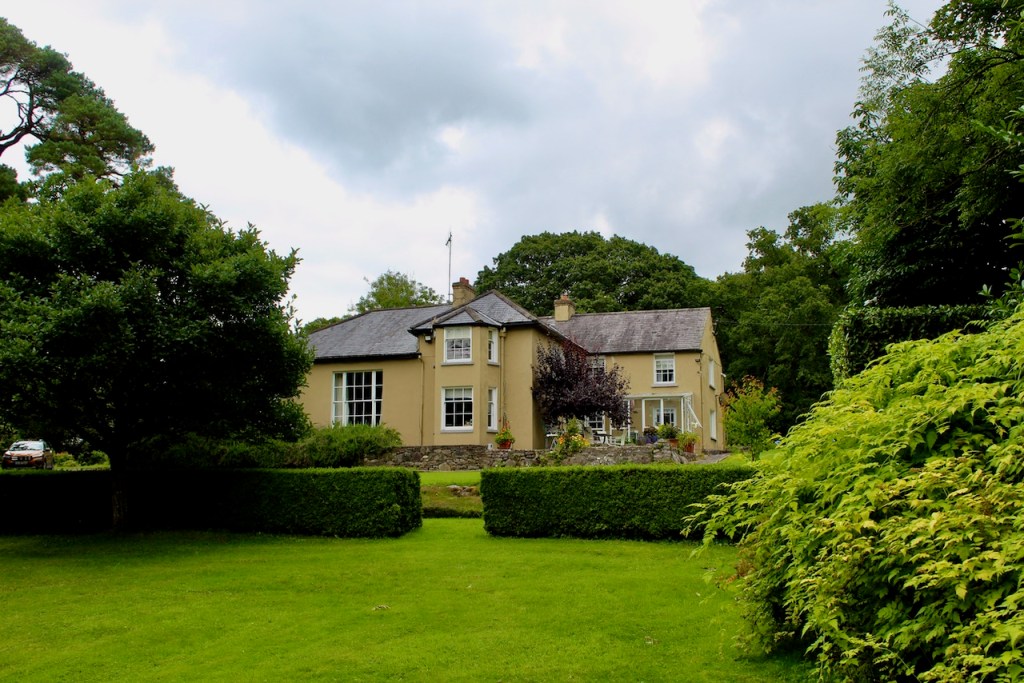
There is plenty to see, however, in the grounds of Kilfane.
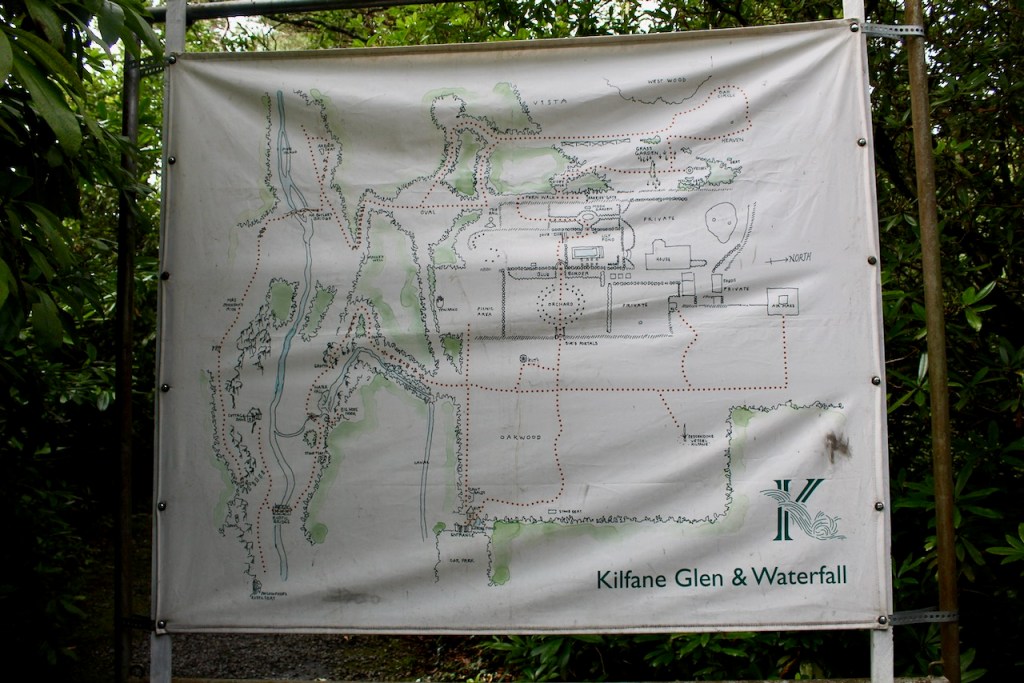
We drove through the woods to reach the car park for Kilfane Glen and Waterfall. The current owners have opened the gardens to the public and restored the key attraction, a romantic glen, waterfall, and cottage ornée in the style of Marie Antoinette’s Petit Trianon, a country-style cottage where she used to play at being a regular person. There is more to the gardens, however, than the glen. The glen, as Robert O’Byrne describes it, is on the edge of the estate: “there existed an area of woodland where the land dropped away to reveal a rock face thirty feet high descending to an open vale dramatically strewn with boulders.” The Powers added a mile-long canal leading to the glen, which spills down as a waterfall. A thatched cottage ornée was added – Robert O’Byrne tells us that advocates of the Picturesque argued that such landscapes needed a humanising focus in the same way as the paintings which had inspired them. There had to be a central point to which the eye was drawn. [4]
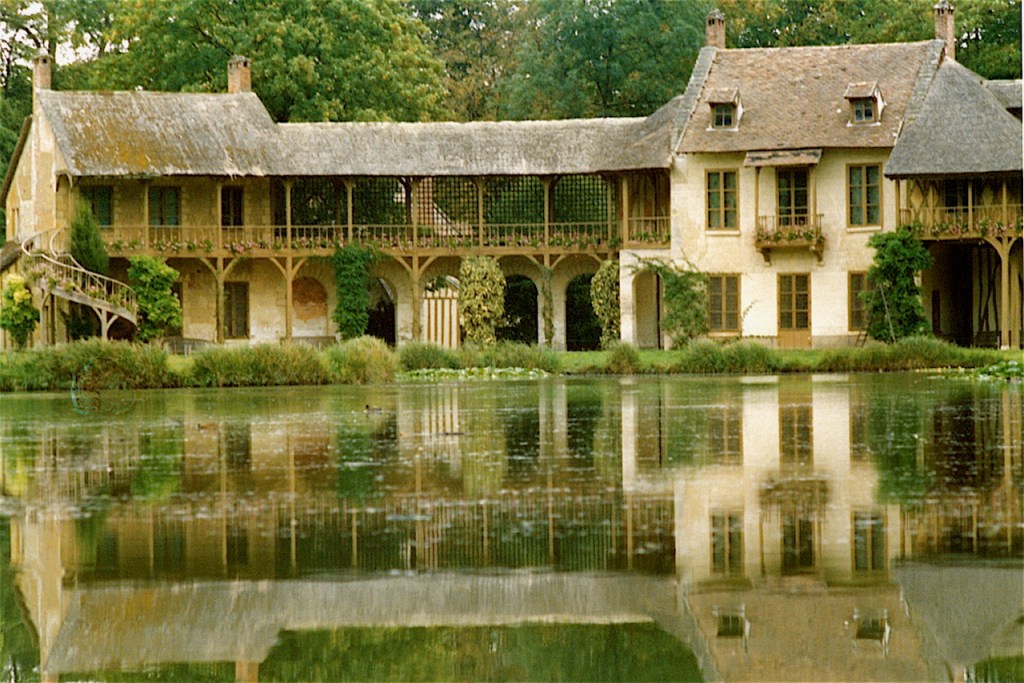
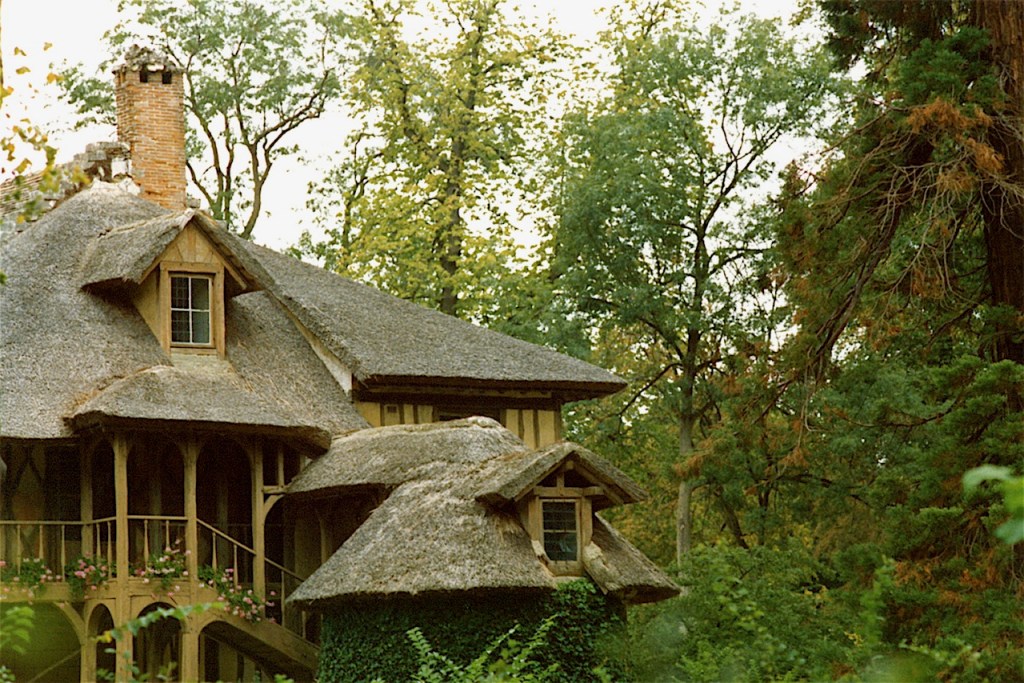
We followed the map, provided on paper from the entrance kiosk, and reproduced on a large canvas next to the kiosk. We entered the oak wood, next to a frog pond.
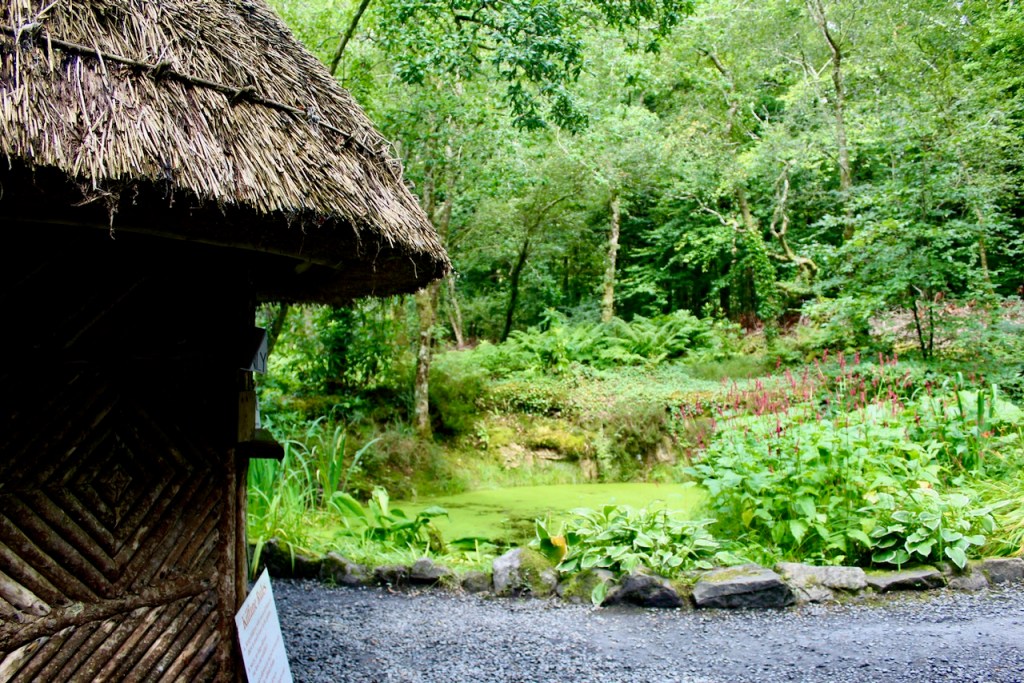
The gardens themselves are an example of a romantic era garden, and date from the 1790s. The gardens embody the theory of the Picturesque. Robert O’Byrne tells us that “the picturesque is associated with painting (it derives from the Italian term ‘pittoresco’ meaning ‘in the manner of a painter’). It was thus used by a key figure in the evolution of the concept William Gilpin who in his 1768 Essay on Prints defined picturesque as being ‘expressive of that peculiar kind of beauty, which is agreeable in a picture.’ Essentially the picturesque as proposed by Gilpin and others offers an aesthetic experience between the extremes of the sublime (which induces an emotion akin to terror [as theorized by Edmond Burke, whom we came across at Annaghmore in County Sligo]) and the beautiful which relies on symmetry and a calm-inducing order. The inspiration for landscapes that might be classified as picturesque came from artists of the previous century, most notably Claude Lorrain and Gaspard Poussin. In Ireland one of the most perfect expressions of this kind of landscape design can be found at Kilfane, County Kilkenny where theories of the picturesque were put into practice with enchanting results.“
Robert O’Byrne writes: “we do not know the precise date for the site’s creation or indeed who was responsible for its design (perhaps the Powers themselves, since the main house contained a famed library and they were likely to be familiar with the theories of Gilpin, along with those of other proponents of the picturesque such as Sir Uvedale Price and Richard Payne Knight).” Susan Mosse, current owner of the gardens and woodsman’s cottage, adds that “in the Royal Society of Antiquaries photos, the drawings specifically refer to MRS POWER, and I believe she must be included as the gardening force in Kilfane. She is known to have helped various others in their gardens (Grattan, et al).” [note that Harriet Bushe’s mother was Mary Grattan.]. The website adds that Sir John’s twin brother Richard, founder of the Kilkenny Theatre, also had a hand in the garden.
The Kilfane website adds to this description: “Under the influence of Rousseau and the Romantic movement, a trend had begun in the final days of the 18th century for the improvement of parks, demesnes and gardens in a new style: more rugged and wild, expressionistic landscapes became the preferred mode, away from the earlier arcadian, pastoral, sublime fashions of the early 18th century. The use of water (cascades and waterfalls) for most dramatic effect, the exploitation of more savage and withdrawn places (ravines and valleys), and the introduction of architectural caprices (caves and grottoes), combined to create and heighten a series of picturesque scenes which might embody the perfect Romantic attitude and transport the soul in a sweet and tender melancholy.“
Throughout the garden are pieces of art.
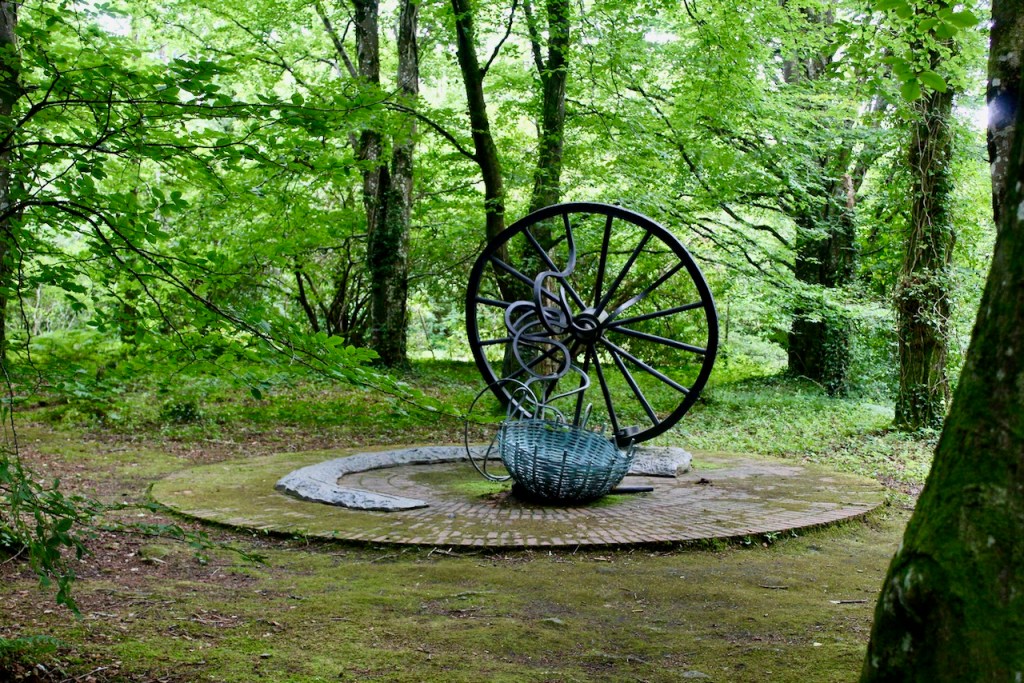



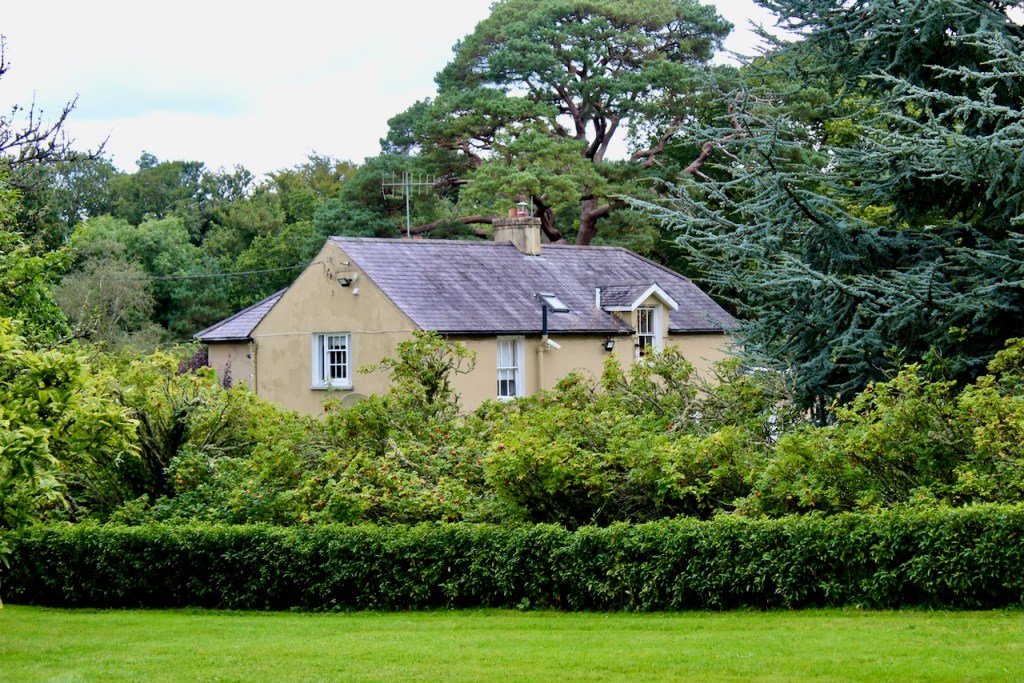
The orchard has a border called the Blue Border, with a lovely collection of flowers.
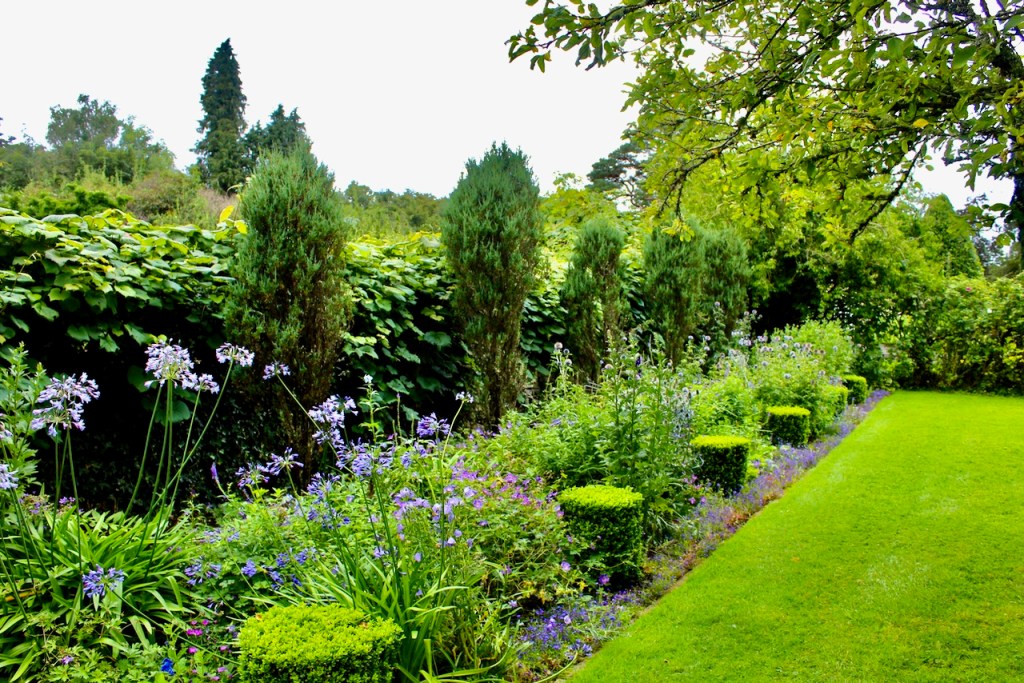

We entered into the next garden (the entire garden is divided into sections like rooms), that contains the lily pond.

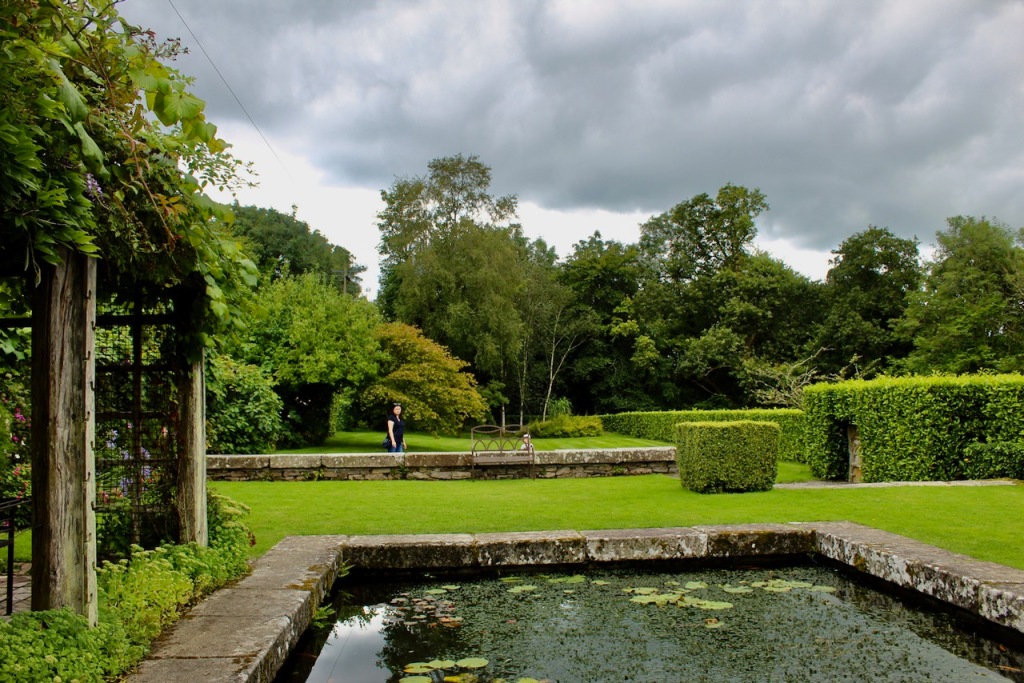

Beyond the lily pond is the “moon garden.”

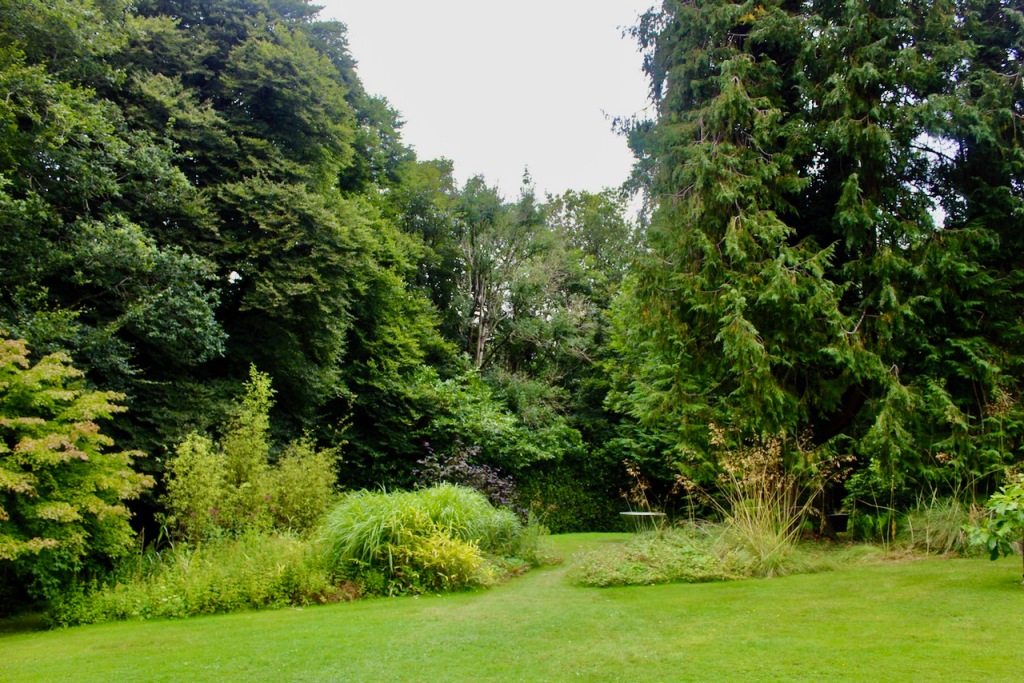
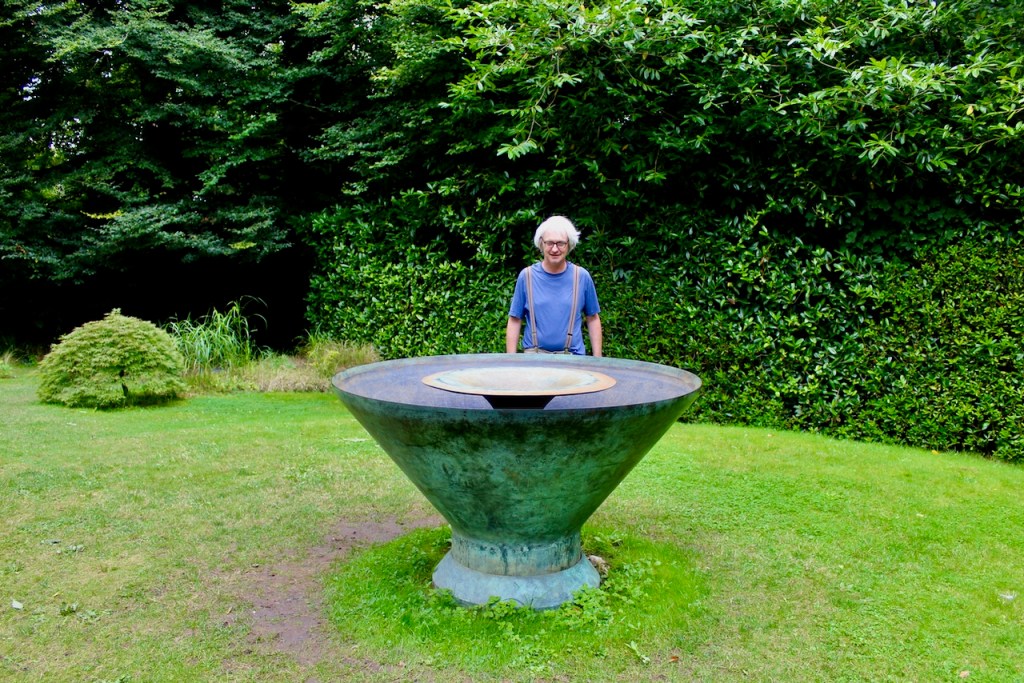
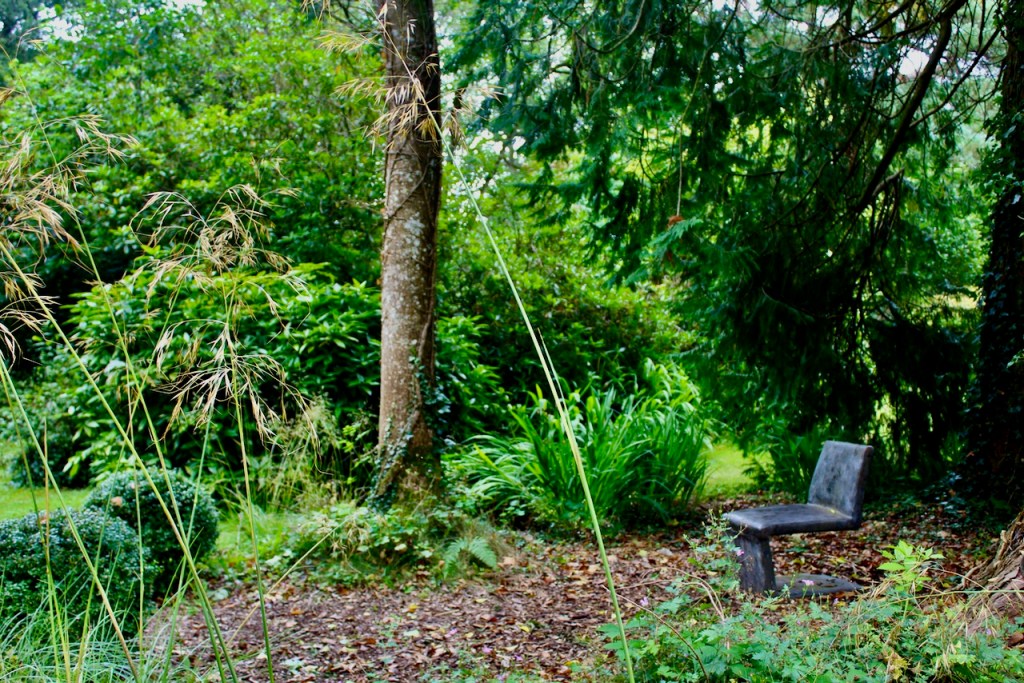
Next to the moon garden is a grassed, hedged “room” that looked rather like an archery lawn.

Beyond the formal gardens is a fern walk, leading down to the “faeries’ gate.”
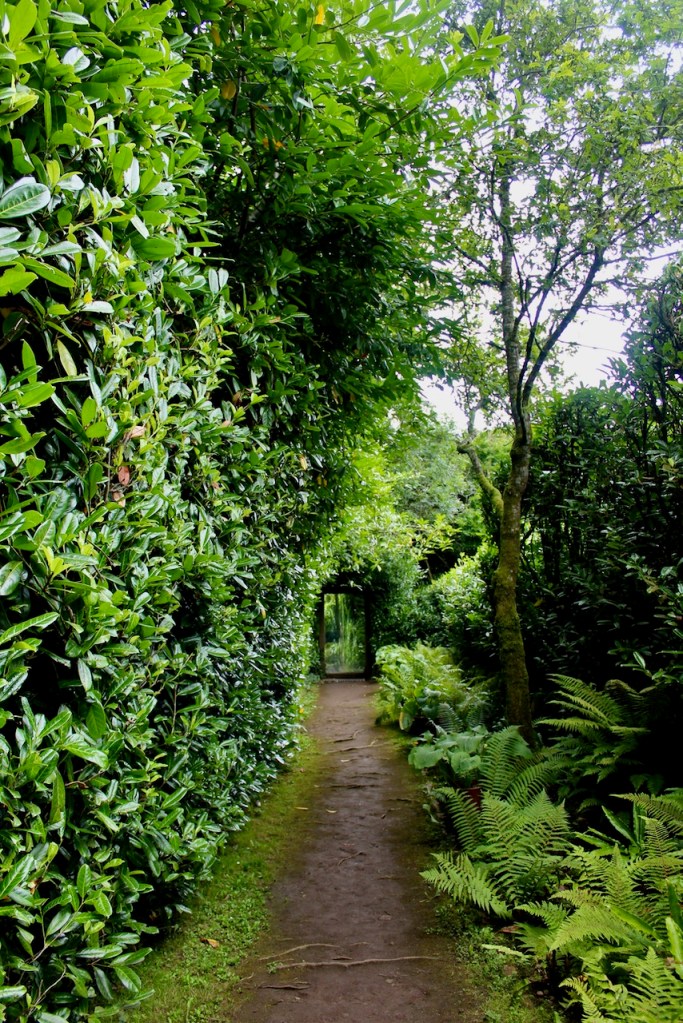

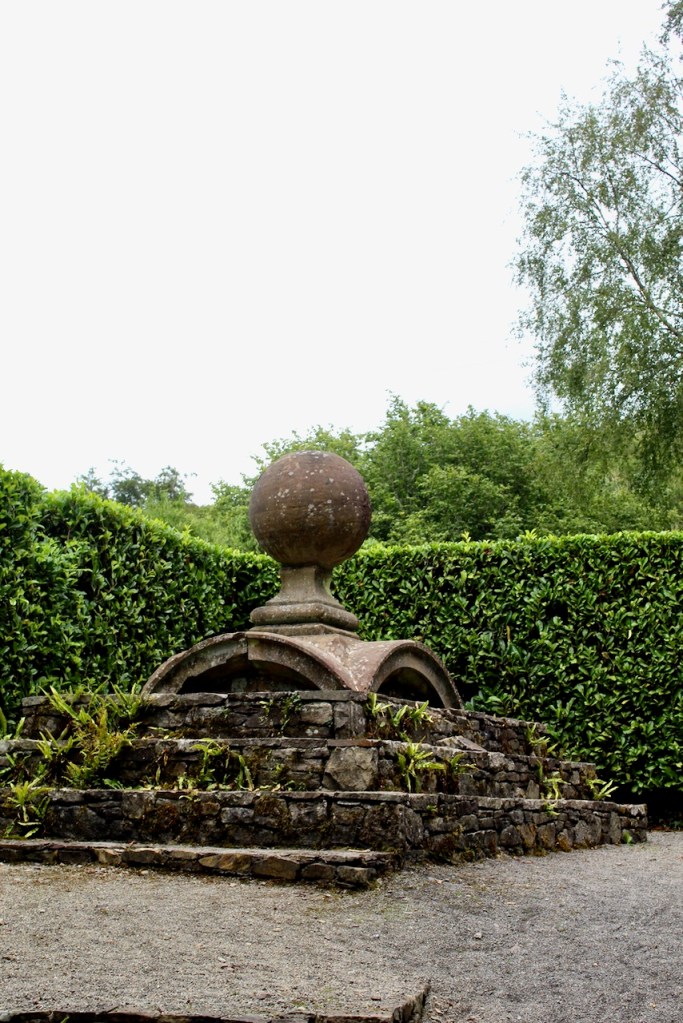
By the faeries’ gate, we entered more luscious woodland. This included spots tantalizingly named “hell” and “heaven.” We didn’t work out which was which, though there was a path that looked as if it was made of moss-covered bones, so I decided that this must be “hell.”
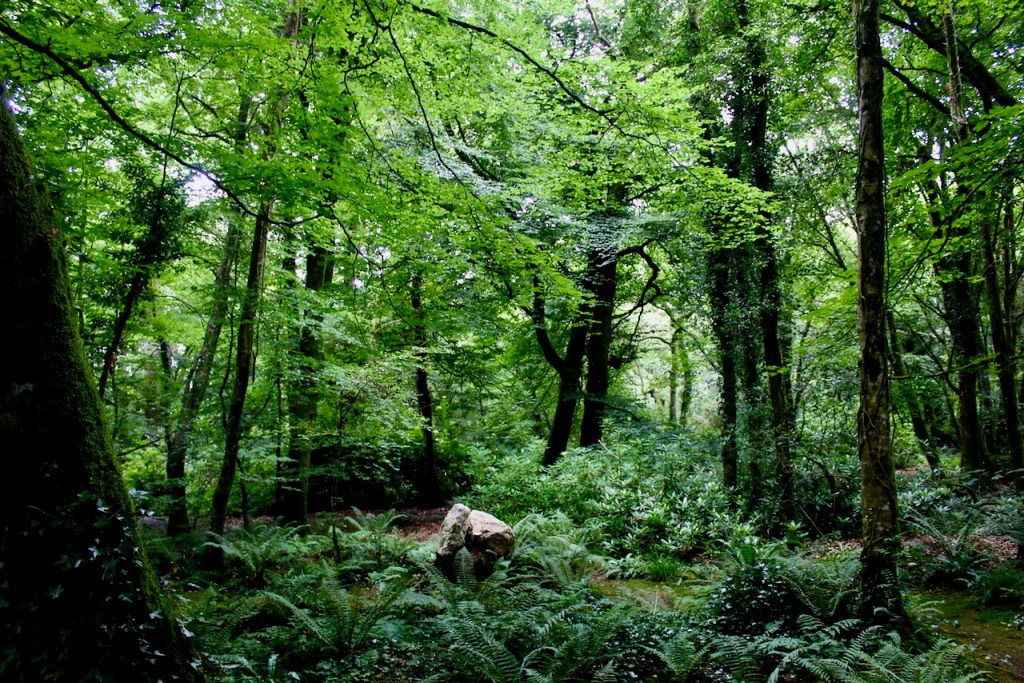
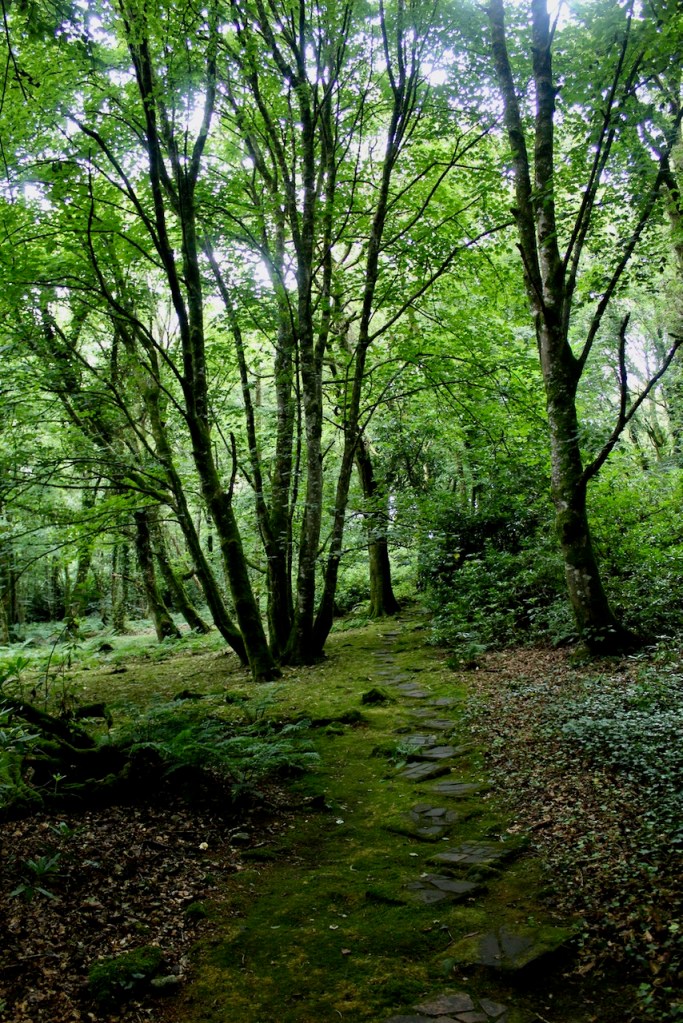
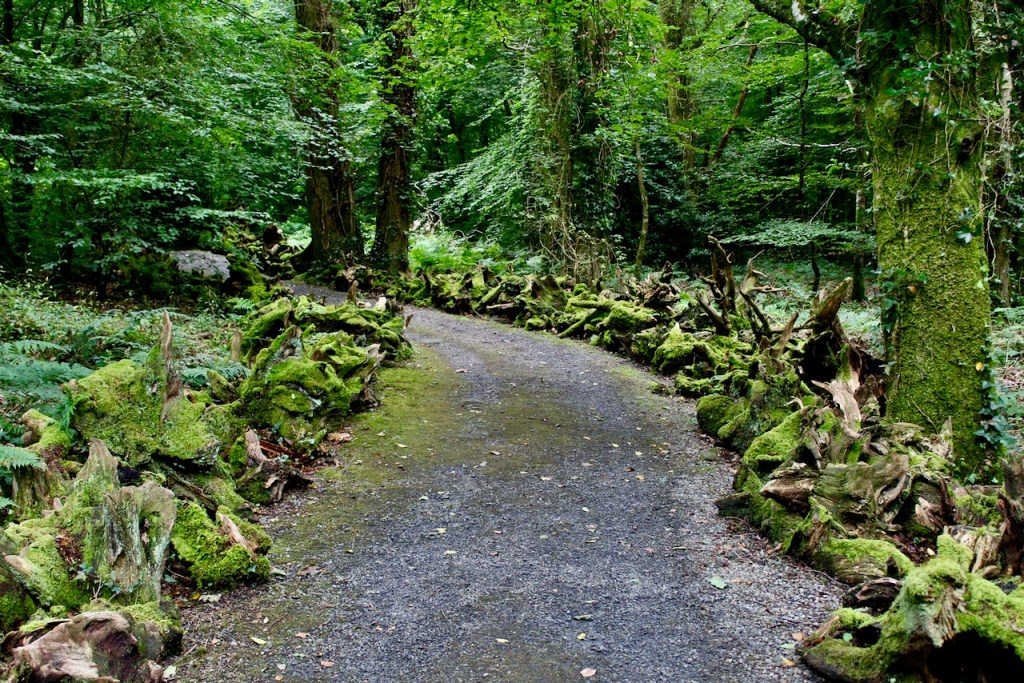
We then passed by the Insect Meadow with its swinging seat, and the top of a decorative Ionic column on the ground.
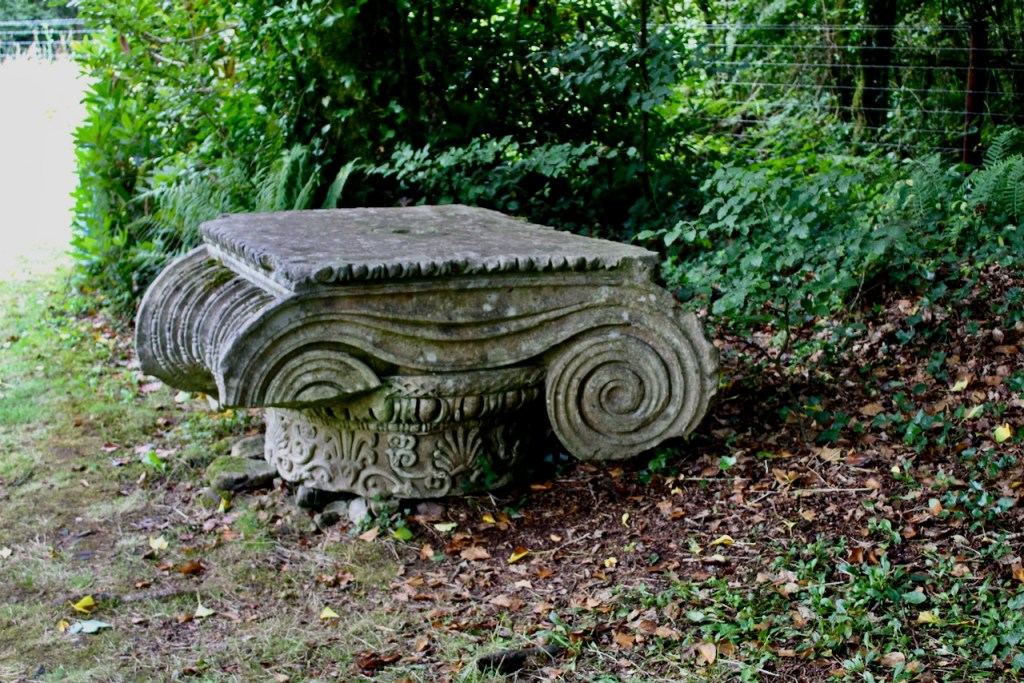
From here we went toward the stone steps, which lead toward the glen.

At the bottom of the steps is “Mr. Butler’s Bridge.”

There are two ways then to reach the cottage and waterfall – we chose to take the longer Cliff Walk. I’m glad we did, as we approached the glen from above, which gave us lovely views of the cottage. To get down to the glen, we had to climb down a spiral staircase!
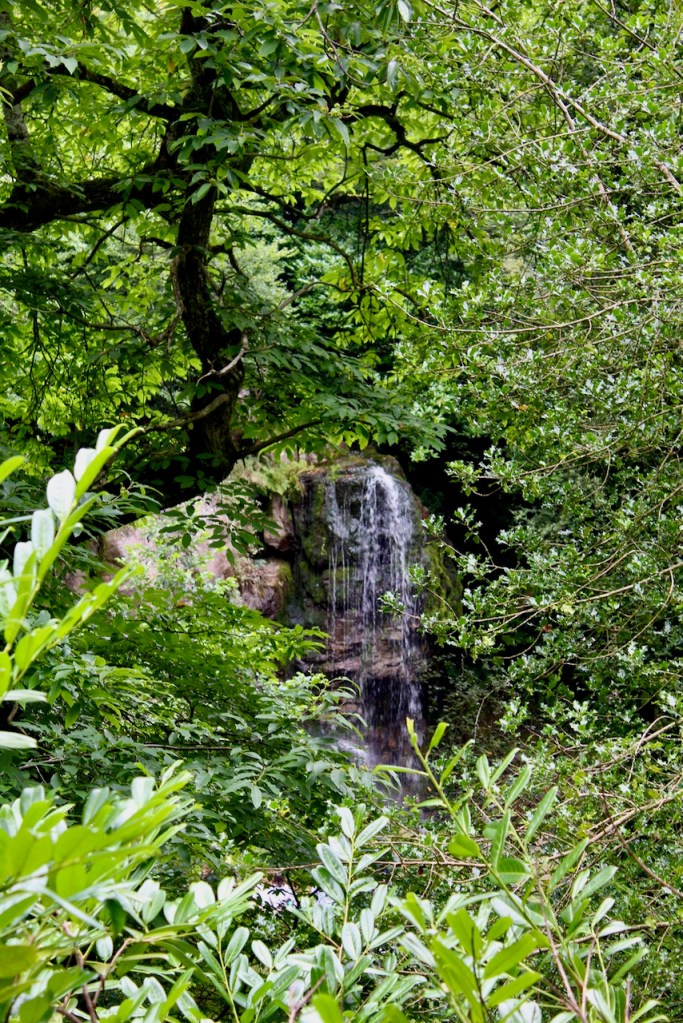

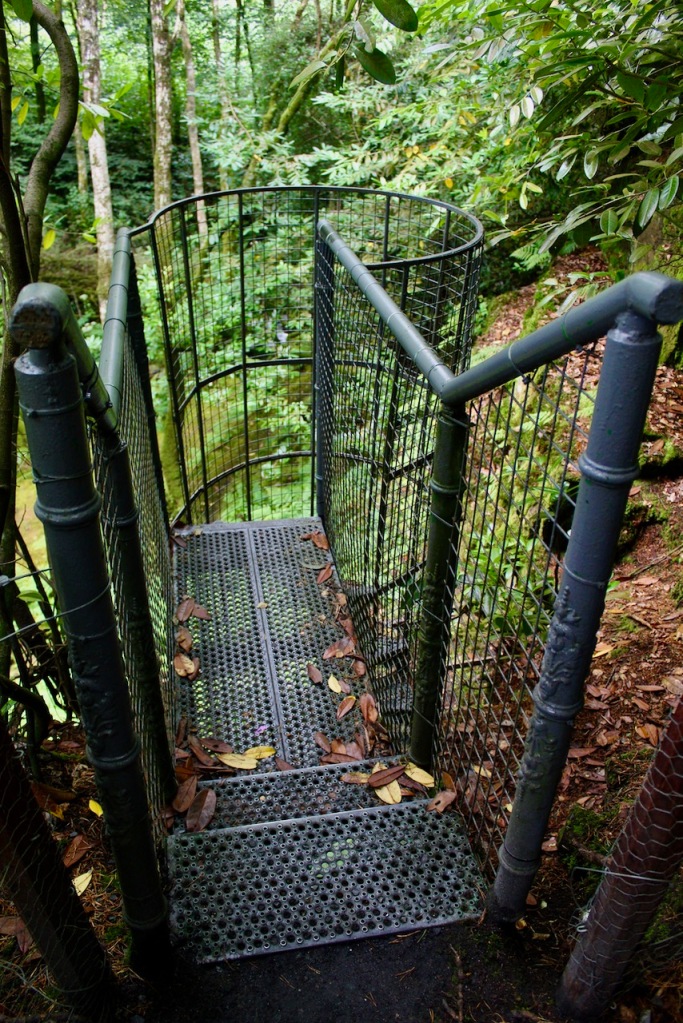
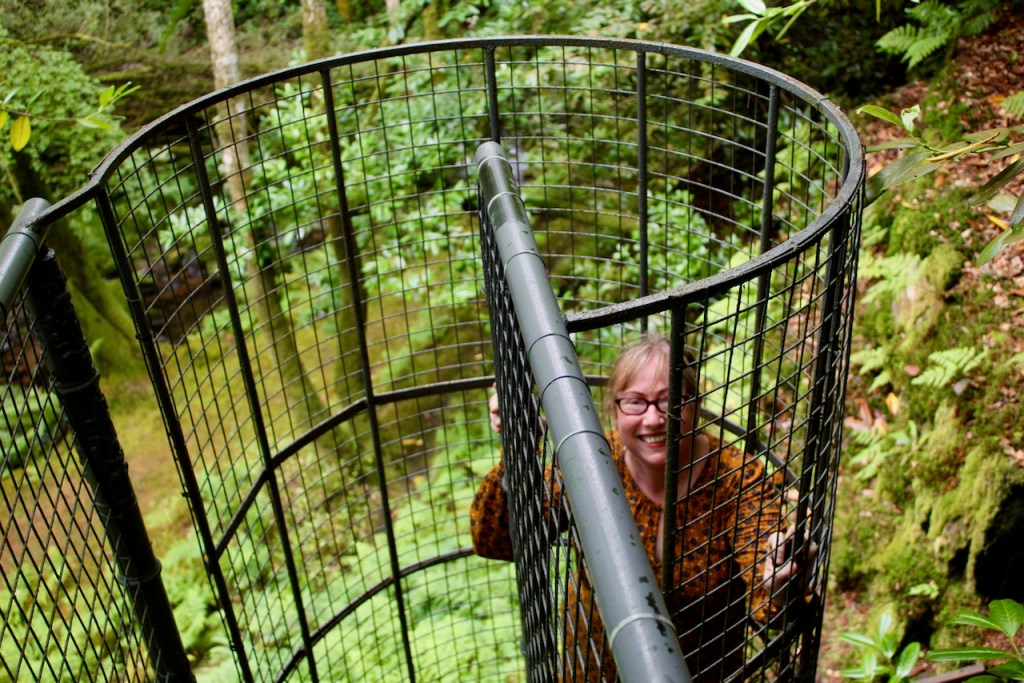
Robert O’Byrne tells us more about the garden, and about the enormous amount of work the current owners have put into the property: “Gradually the whole place fell into decay, the cottage becoming a ruin, the grassy lawn and surrounding paths overgrown, the woodlands surrendered to laurel and rhododendron (with consequent loss of more delicate ground cover) and the waterfall dried up as the canal was breached and broken. Such might have remained the case to the present but for the discovery and rescue of this delightful spot by its present owners who more than twenty years ago embarked on a complete restoration of the place. Thanks to their admirable diligence the grounds today look much as they did when first created over two centuries ago.”


The National Inventory of Architectural Heritage describes the cottage, which has been called Potter’s Cottage: “Detached two-bay single-storey cottage orné with dormer attic, c.1800, with single-bay single-storey recess to right. Restored, 1989. Hipped roof (hipped to dormer attic windows) with reed thatch in English style having rope work to ridge, rendered chimney stack, and overhanging eaves (on timber post to recess).” [5]
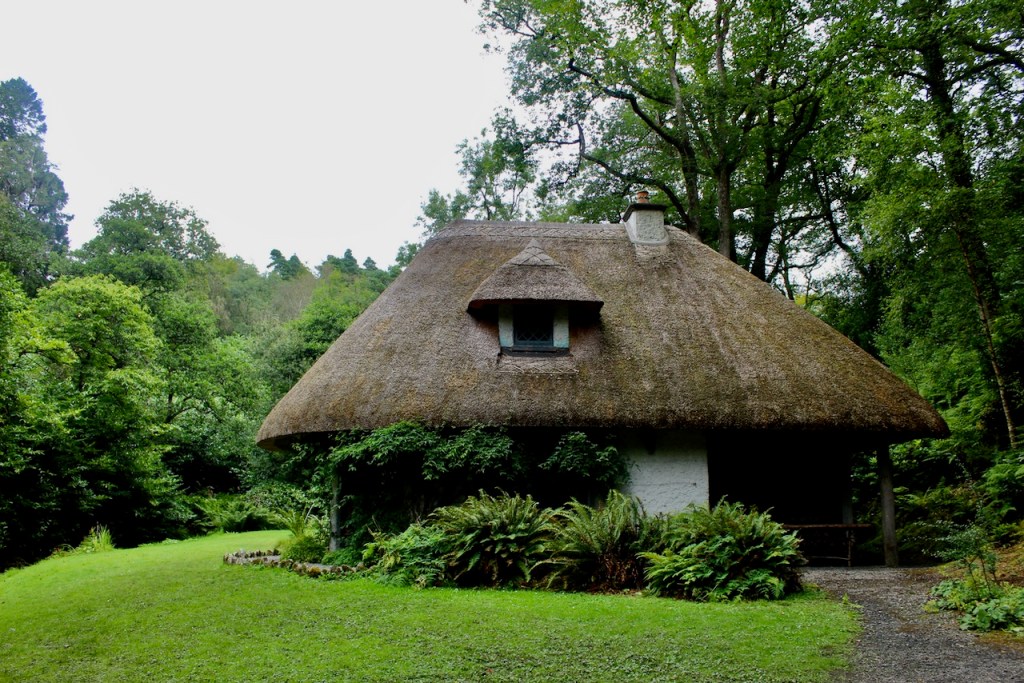

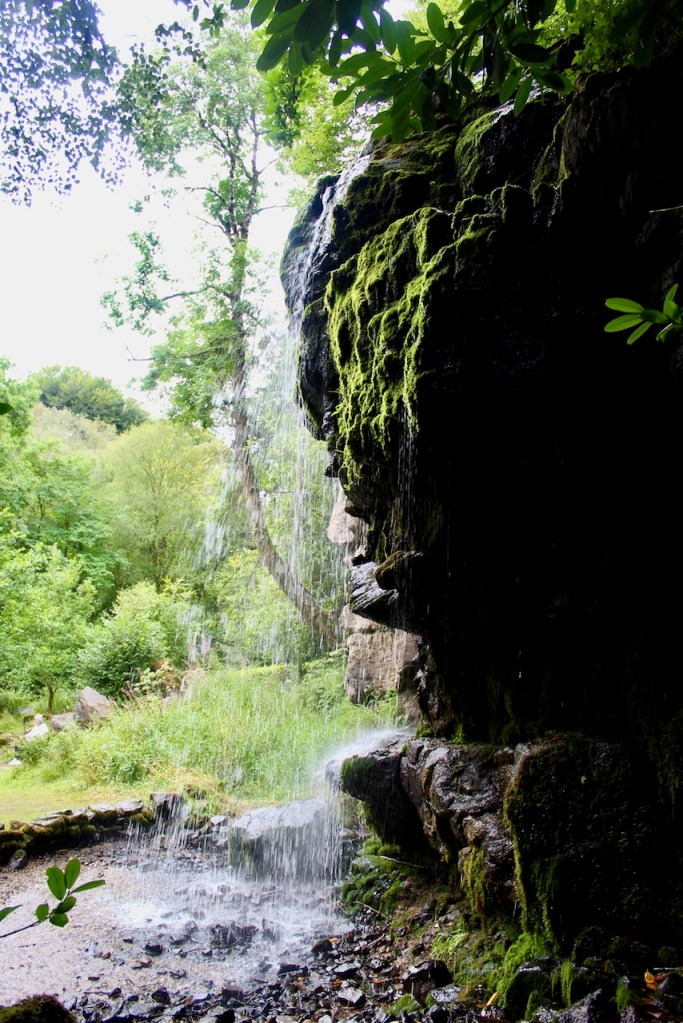
We headed back to the house and picnic area, and noticed a tree house in the garden. All together, it makes for a lovely day out. I envy those who live nearby, who can visit such beauty often!

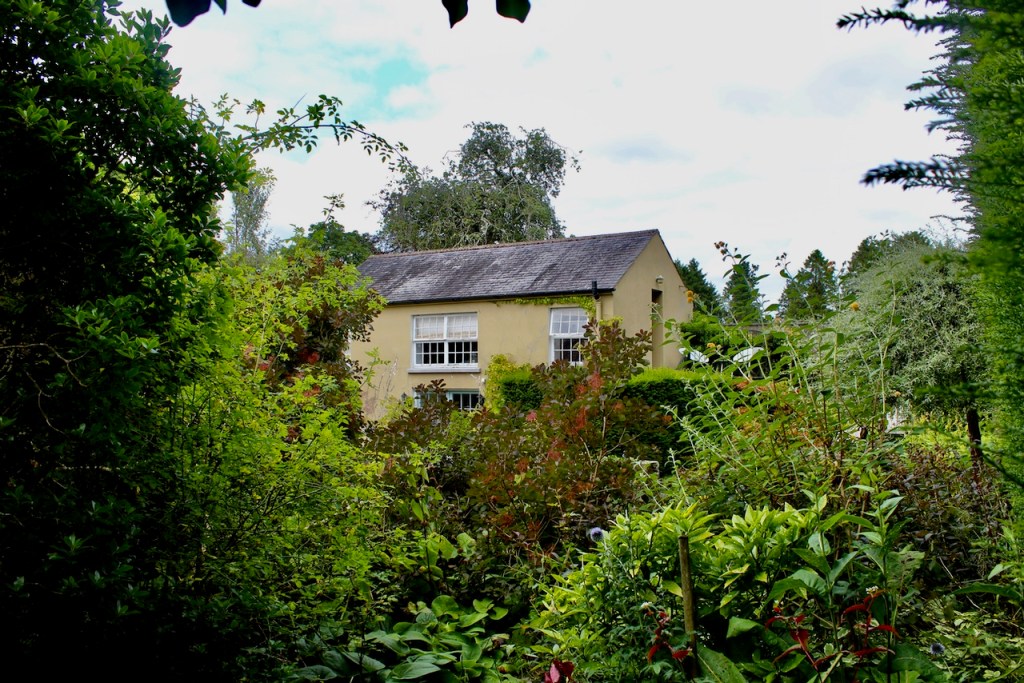
[1] Kilfane passed through the marriage of Harriet Bushe to John Power (1771-1844), later 1st Bt Power of Kilfane, from the Bushe family to the Power family. Robert O’Byrne tells us: “The land here had originally belonged to the Cantwells, prior to the family being banished to Connaught in the 17th century. It then passed into the ownership of Colonel John Bushe who was granted Kilfane in 1670, and his descendants remained on the estate for most of the following century. In the late 1700s, John Power married Harriet Bushe whose brother Henry Amias Bushe then lived at Kilfane. Power was the son of a County Tipperary landowner who had served with the British army in India where he had been aide-de-camp to Clive during the Battle of Plassey. Eventually he took a lease in perpetuity on Kilfane from his brother-in-law, and carried out many improvements on the estate.”
[2] https://theirishaesthete.com/2016/09/12/beyond-the-green-baize-door/
[3] https://theirishaesthete.com/2021/03/24/get-it-fresh/
[4] https://theirishaesthete.com/2013/11/11/when-nature-imitates-art/
Wow, I always love your blog, and your Faeries Gate photo is hilarious!!xx
LikeLike
Thanks Stephen!! I know, I love that photo!
LikeLike